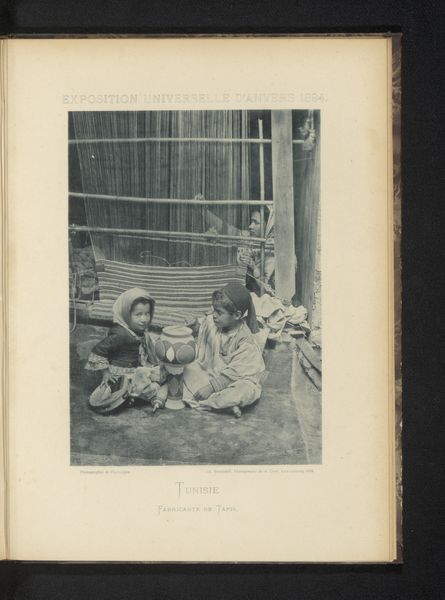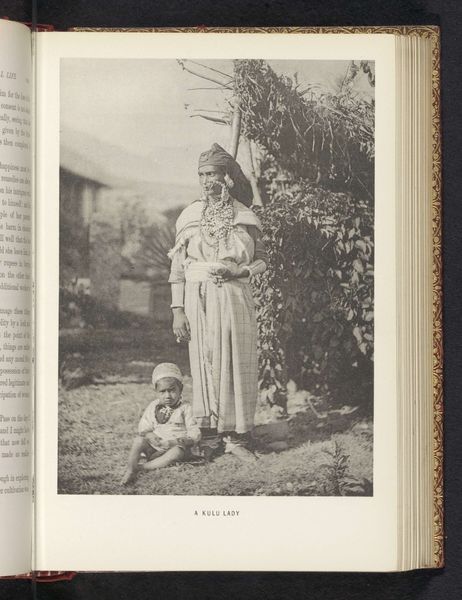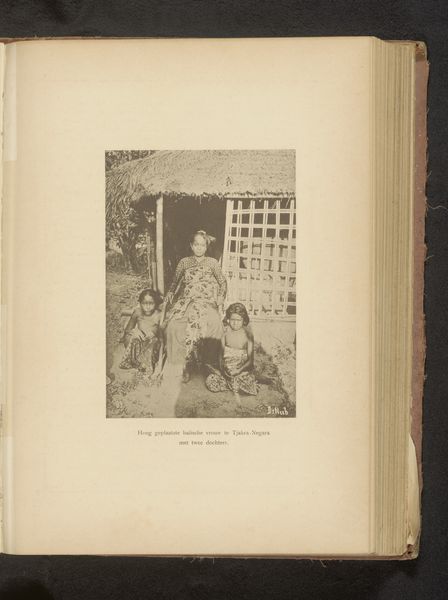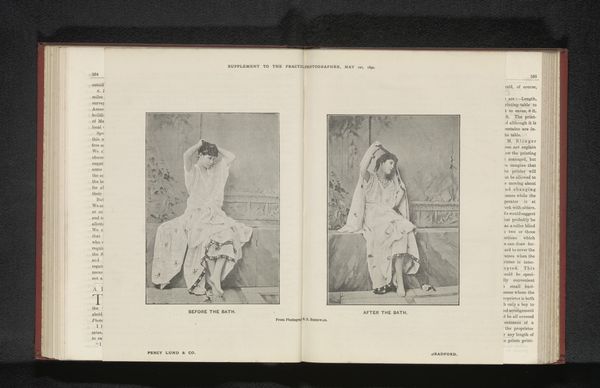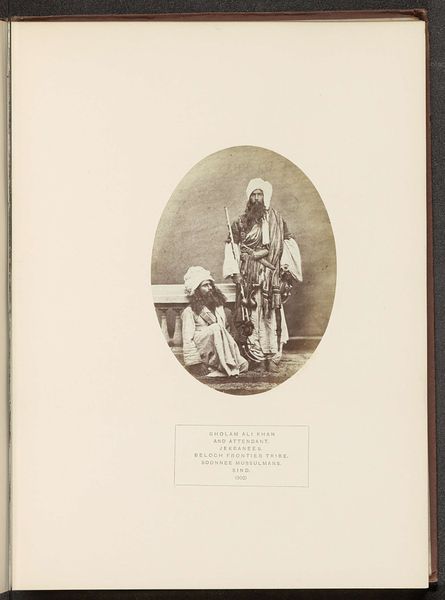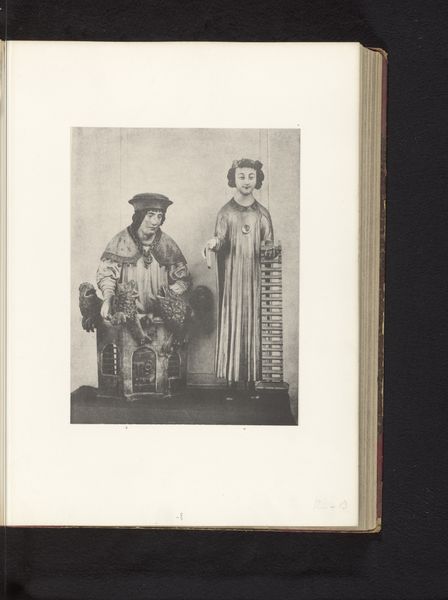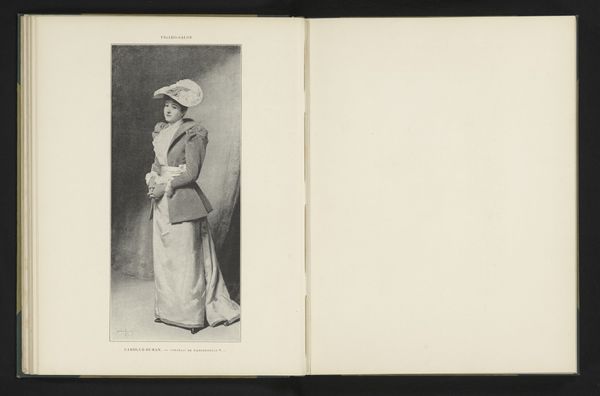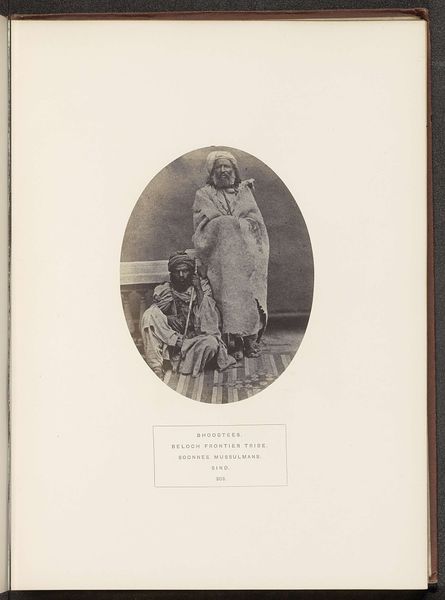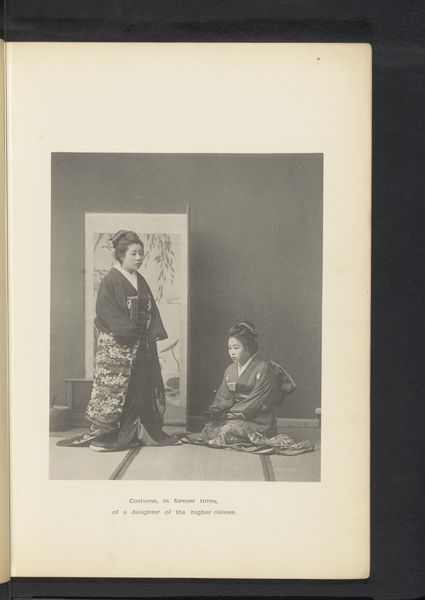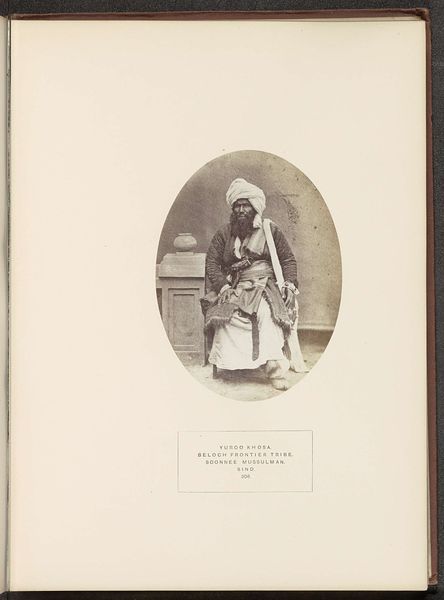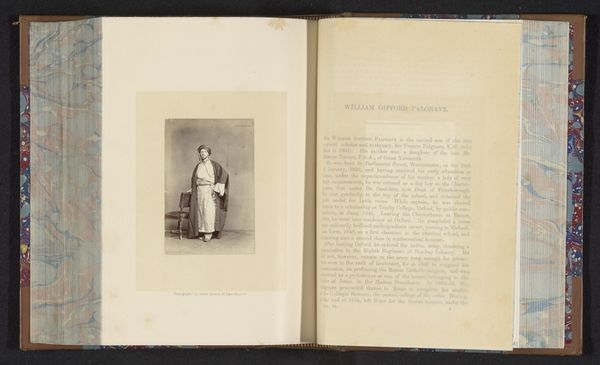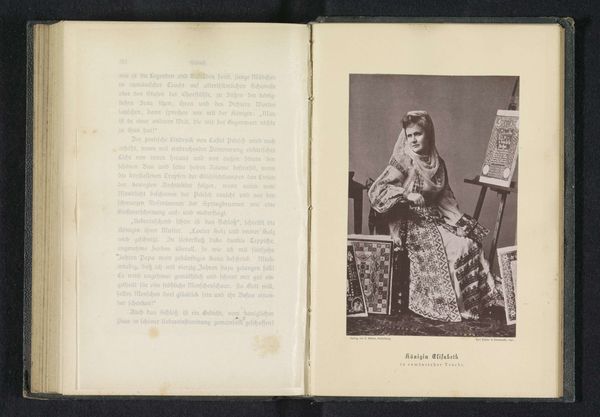
Moeder en zoon voor een gebouw in het Tunesische deel van de Wereldtentoonstelling van Antwerpen in 1894 1894
0:00
0:00
photography
#
portrait
#
african-art
#
photography
#
genre-painting
#
realism
Dimensions: height 215 mm, width 152 mm
Copyright: Rijks Museum: Open Domain
Editor: This photograph, "Mother and Son Before a Building in the Tunisian Section of the World Exhibition in Antwerp, 1894," by Charles Bernhoeft, strikes me as a very formal portrait, almost staged. The details in their clothing are fascinating. What draws your eye, in terms of its visual symbolism? Curator: The layering of cultural markers is particularly potent. Consider the Tunisian attire presented within the context of a world exhibition. These events were inherently about displaying the exotic "other," weren't they? The mother's clothing, especially her jewelry, speaks to cultural identity, but what does it mean to showcase that identity for a Western audience? Do you see the tension there? Editor: Absolutely. It's almost as if they're on display, meant to represent an entire culture within the confines of this constructed exhibition space. I wonder, does the way they are positioned – almost pressed against the column and the wall – play into this sense of containment? Curator: Precisely. The architecture itself is a symbolic boundary. The column, classically Western, stands in stark contrast to the more organic textures and forms we see in the clothing. Bernhoeft is consciously placing these visual elements in dialogue. What feelings are stirred by the gaze of the subjects, their expressions? Editor: There's a solemnity, definitely, but also a quiet strength. It's hard to tell if it is posed or real. There is something vulnerable, maybe. Curator: Perhaps. Bernhoeft isn't simply documenting; he’s carefully constructing a narrative. The "Tunisian Mother" becomes a symbol, laden with Western expectations and projections. How much are we, as viewers now, participating in this historical act of observation? Editor: That is interesting. This image seems simple but embodies layers of power, representation, and cultural exchange—all framed within the grand narrative of the World Exhibition. Thank you. Curator: Indeed. And through its visual language, the photograph reveals a great deal about not only its subjects but also about the society that created and consumed it.
Comments
No comments
Be the first to comment and join the conversation on the ultimate creative platform.
